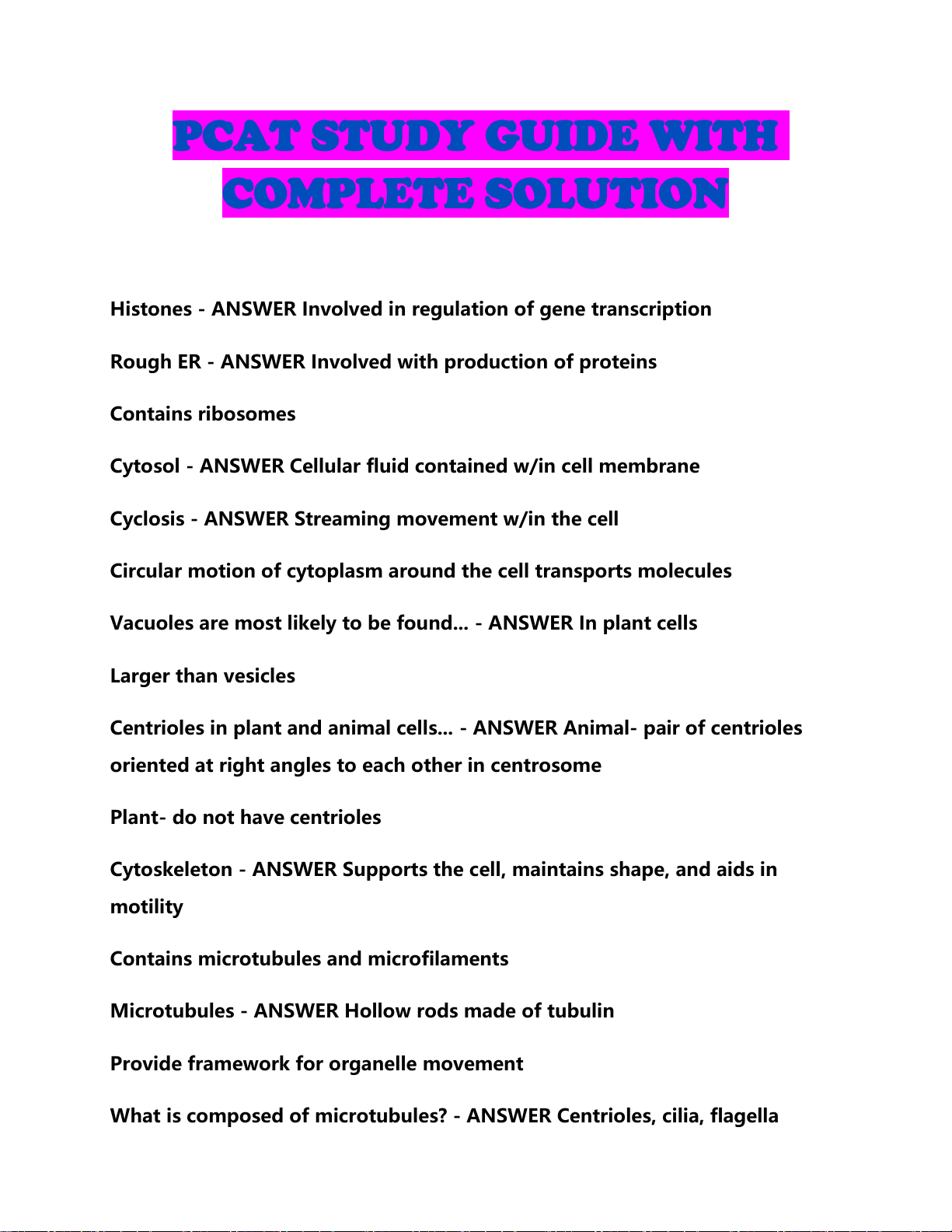
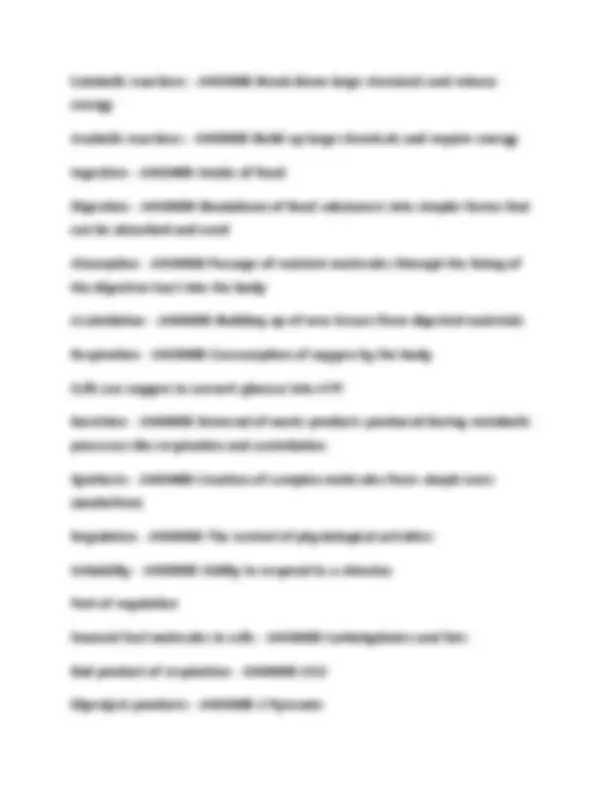
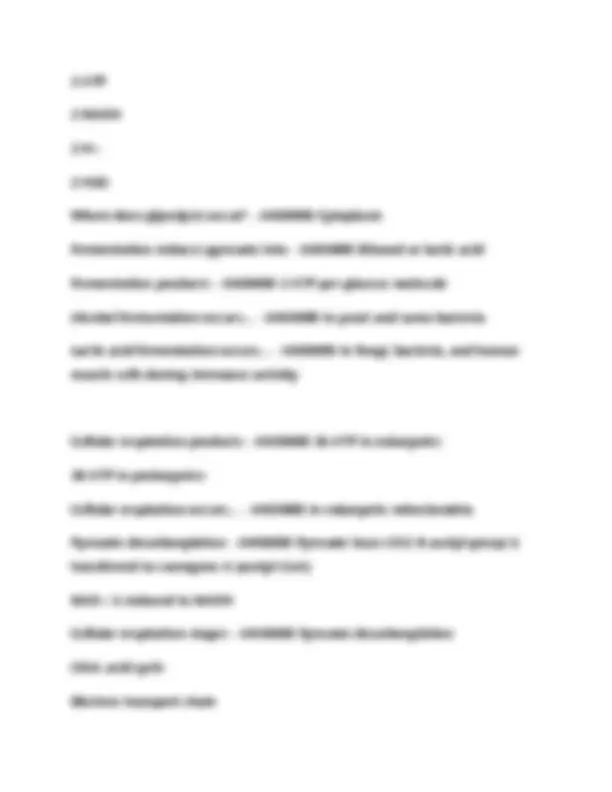
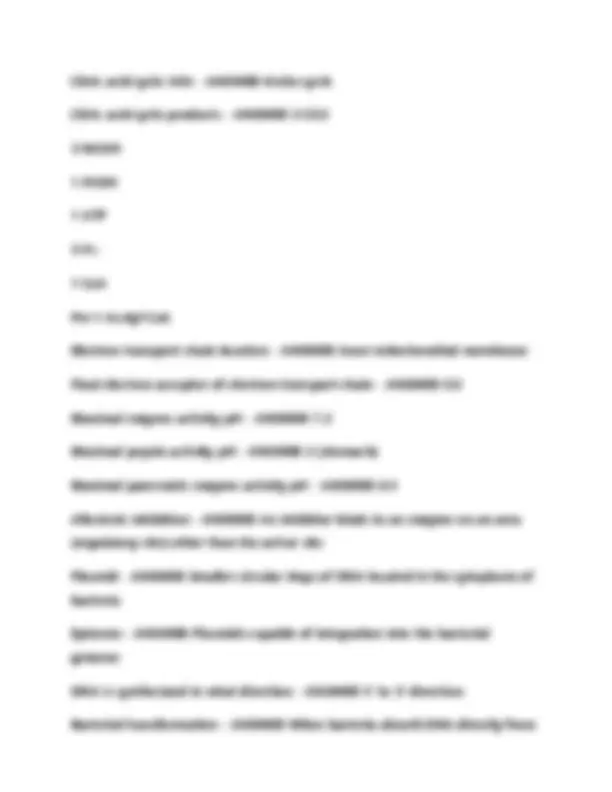
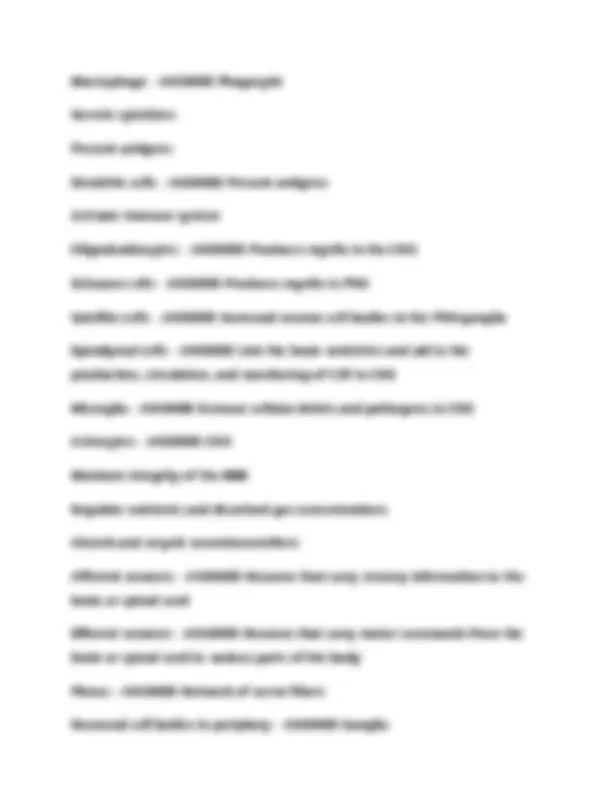
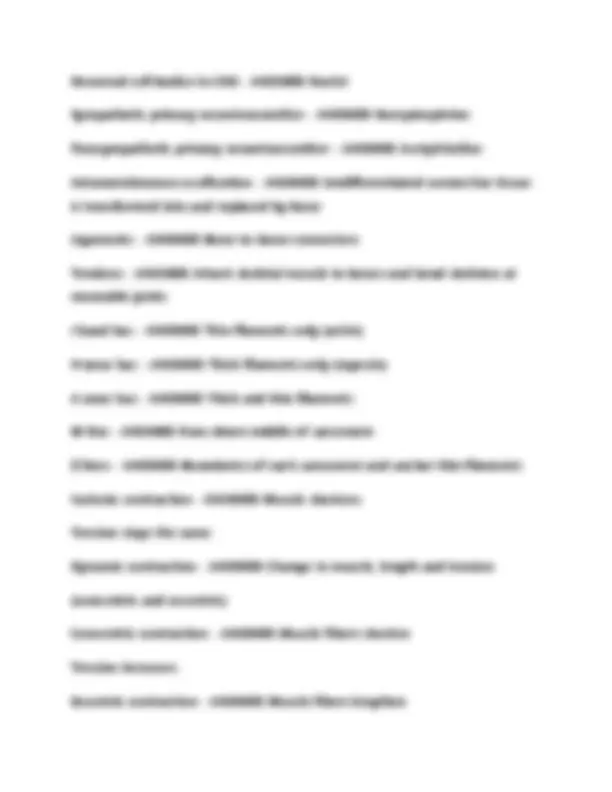
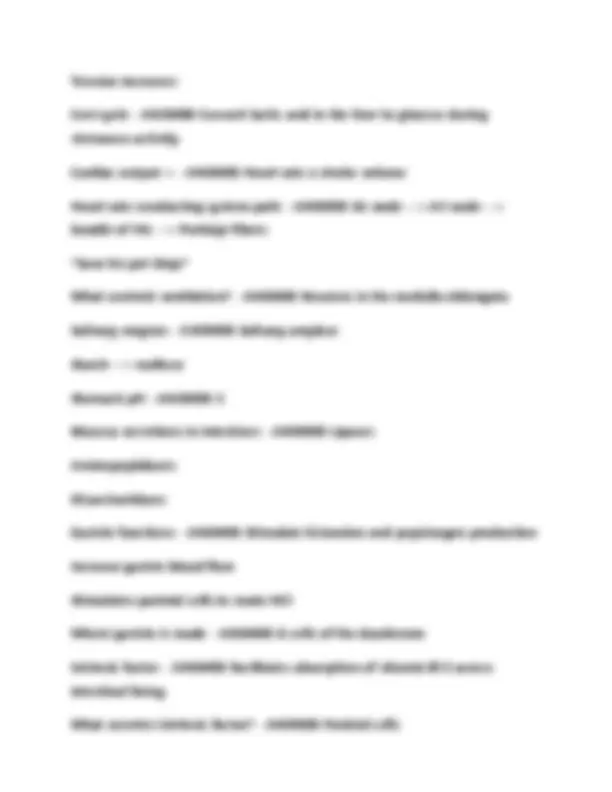
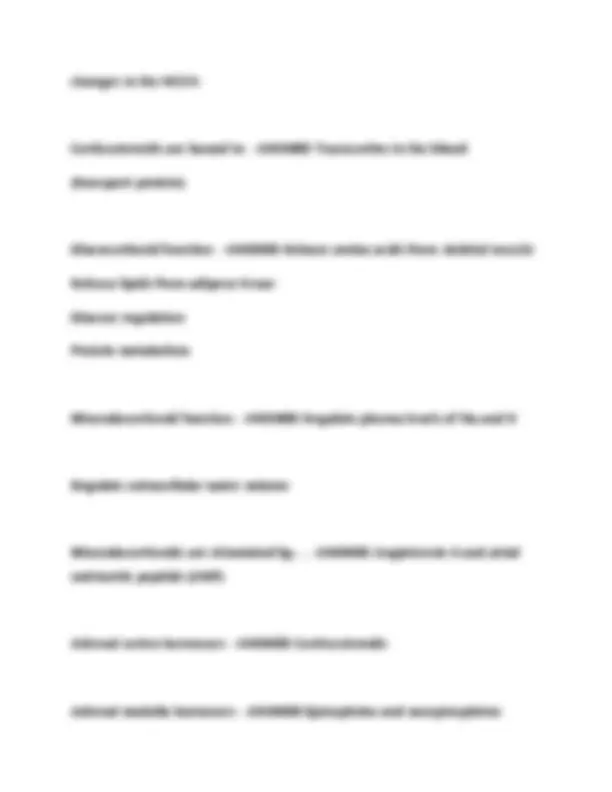

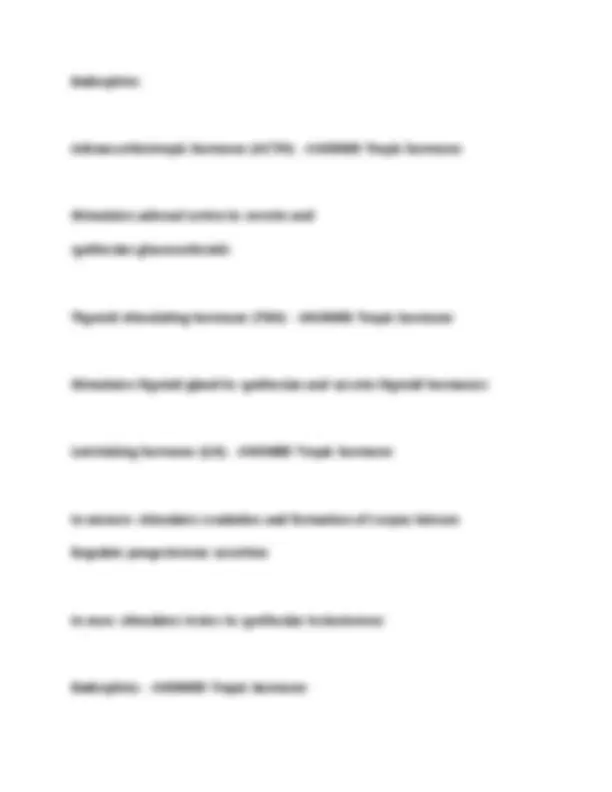
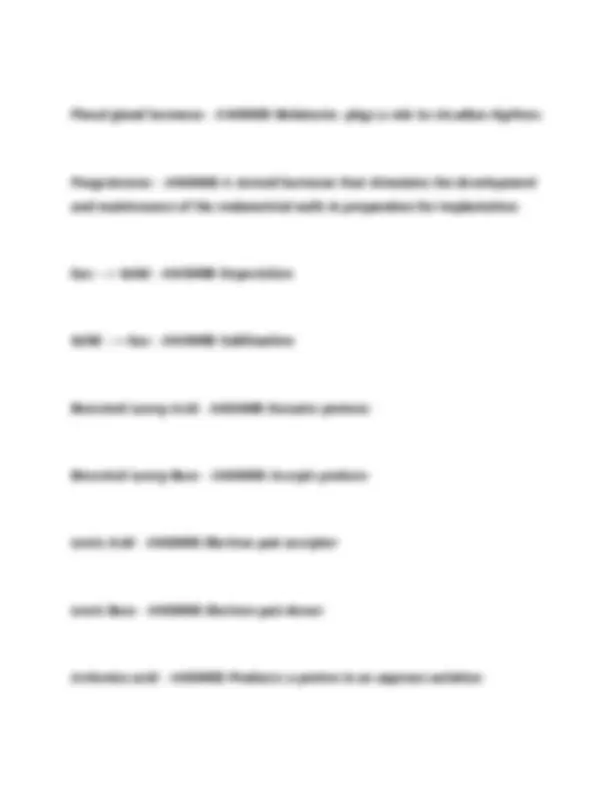

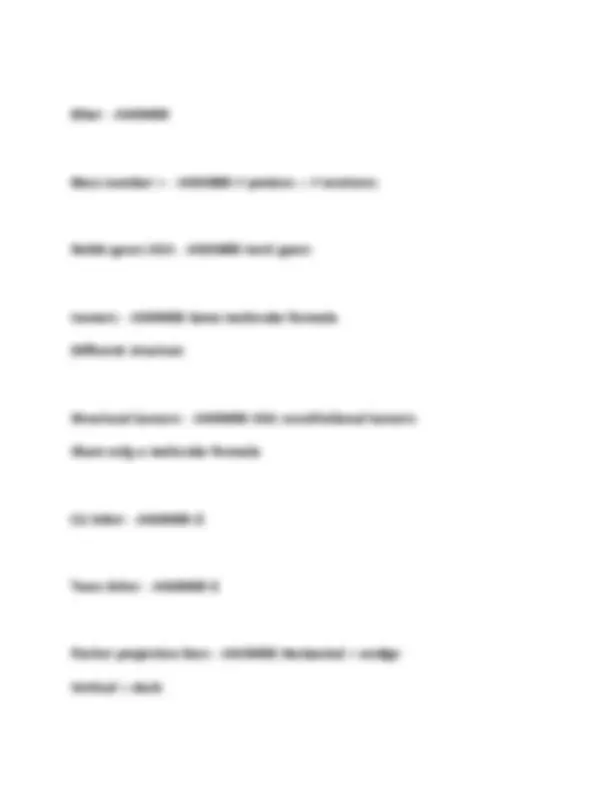
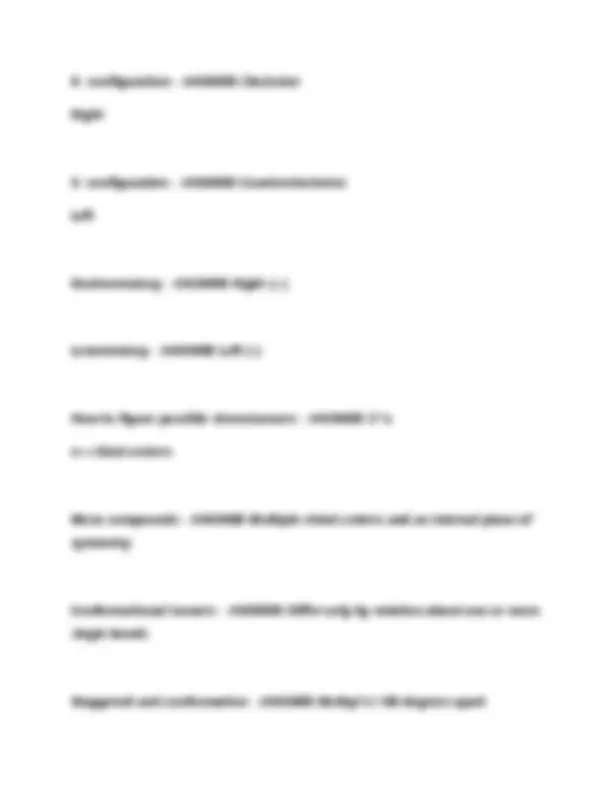
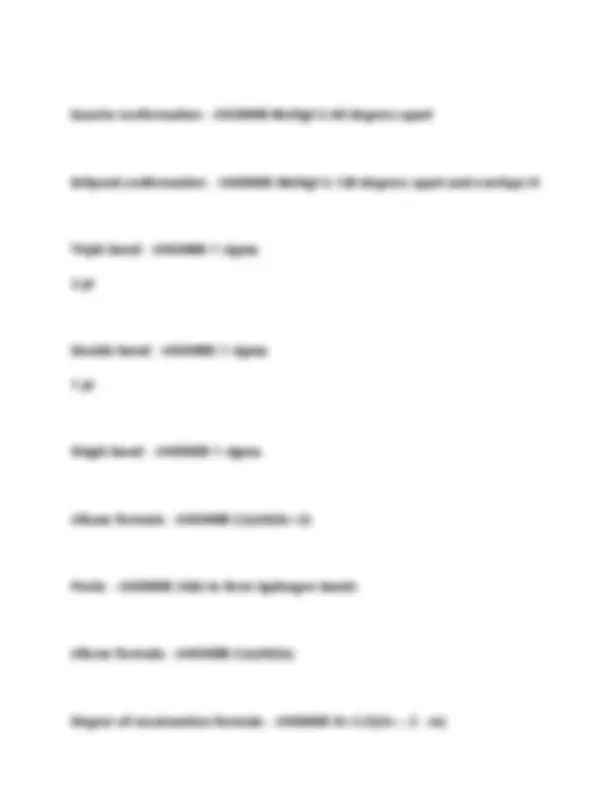

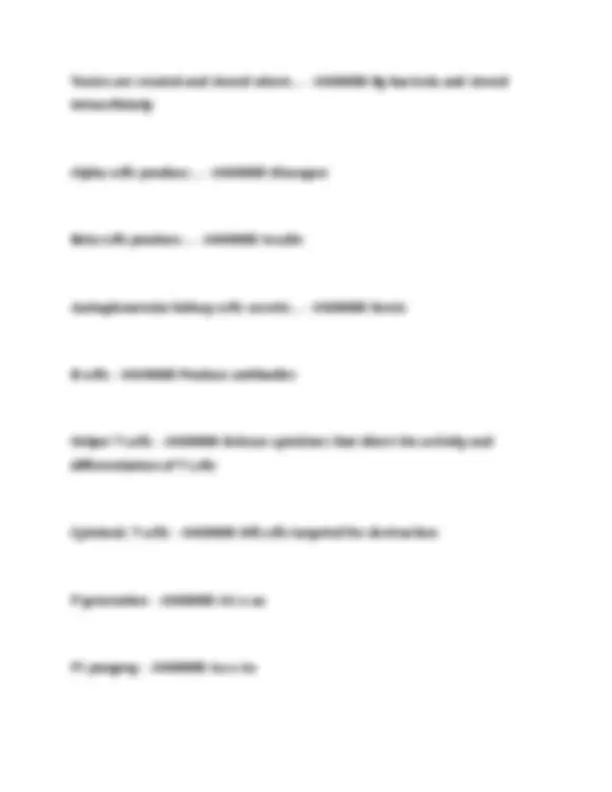
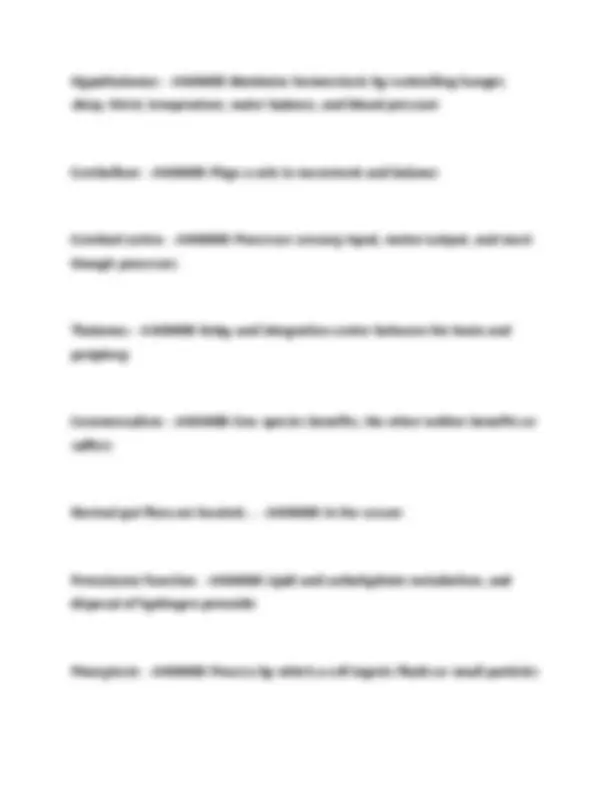



Study with the several resources on Docsity

Earn points by helping other students or get them with a premium plan


Prepare for your exams
Study with the several resources on Docsity

Earn points to download
Earn points by helping other students or get them with a premium plan
Community
Ask the community for help and clear up your study doubts
Discover the best universities in your country according to Docsity users
Free resources
Download our free guides on studying techniques, anxiety management strategies, and thesis advice from Docsity tutors
This study guide offers a thorough review of key biology concepts for the pcat exam. it presents numerous questions and answers covering cell structures, functions, metabolic processes (glycolysis, cellular respiration, fermentation), genetics, and basic human biology. The guide is valuable for students preparing for the pcat or seeking a comprehensive review of fundamental biological principles.
Typology: Exams
1 / 26

This page cannot be seen from the preview
Don't miss anything!



















Histones - ANSWER Involved in regulation of gene transcription Rough ER - ANSWER Involved with production of proteins Contains ribosomes Cytosol - ANSWER Cellular fluid contained w/in cell membrane Cyclosis - ANSWER Streaming movement w/in the cell Circular motion of cytoplasm around the cell transports molecules Vacuoles are most likely to be found... - ANSWER In plant cells Larger than vesicles Centrioles in plant and animal cells... - ANSWER Animal- pair of centrioles oriented at right angles to each other in centrosome Plant- do not have centrioles Cytoskeleton - ANSWER Supports the cell, maintains shape, and aids in motility Contains microtubules and microfilaments Microtubules - ANSWER Hollow rods made of tubulin Provide framework for organelle movement What is composed of microtubules? - ANSWER Centrioles, cilia, flagella
Ribosome - ANSWER Site of protein production Smooth ER - ANSWER Involved with metabolism and lipid production Does not contain ribosomes Golgi Apparatus - ANSWER Acts like a post office Receives vesicles from smooth ER and modifies them, repackages them into vesicles, and distributes them to the cell surface by exocytosis Mitochondria - ANSWER Site of aerobic respiration in the cell and supplies energy in the form of ATP Microfilaments - ANSWER Solid rods of actin Important in cell movement and support Move materials across plasma membrane Brownian movement - ANSWER The random movement of particles Cytoplasm - ANSWER Metabolic activity occurs here, including cytosol and all organelles Transport occurs by cyclosis Vacuoles/Vesicles - ANSWER Involved in transport and storage of materials that are ingested, secreted, processed, or digested by the cell Centrioles - ANSWER Involved in spindle organization during cell division Lysosomes - ANSWER Contain hydrolytic enzymes involved in intracellular digestion Break down material ingested by the cell
Where does glycolysis occur? - ANSWER Cytoplasm Fermentation reduces pyruvate into - ANSWER Ethanol or lactic acid Fermentation products - ANSWER 2 ATP per glucose molecule Alcohol fermentation occurs... - ANSWER In yeast and some bacteria Lactic acid fermentation occurs... - ANSWER In fungi, bacteria, and human muscle cells during strenuous activity
Cellular respiration products - ANSWER 36 ATP in eukaryotes 38 ATP in prokaryotes Cellular respiration occurs... - ANSWER In eukaryotic mitochondria Pyruvate decarboxylation - ANSWER Pyruvate loses CO2 & acetyl group is transferred to coenzyme A (acetyl-CoA) NAD+ is reduced to NADH Cellular respiration stages - ANSWER Pyruvate decarboxylation Citric acid cycle Electron transport chain
Citric acid cycle AKA - ANSWER Krebs cycle Citric acid cycle products - ANSWER 2 CO 3 NADH 1 FADH 1 ATP 3 H+ 1 CoA Per 1 Acetyl CoA Electron transport chain location - ANSWER Inner mitochondrial membrane Final electron acceptor of electron transport chain - ANSWER O Maximal enzyme activity pH - ANSWER 7. Maximal pepsin activity pH - ANSWER 2 (stomach) Maximal pancreatic enzyme activity pH - ANSWER 8. Allosteric inhibition - ANSWER An inhibitor binds to an enzyme on an area (regulatory site) other than the active site Plasmid - ANSWER Smaller circular rings of DNA located in the cytoplasm of bacteria Episome - ANSWER Plasmids capable of integration into the bacterial genome DNA is synthesized in what direction - ANSWER 5' to 3' direction Bacterial transformation - ANSWER When bacteria absorb DNA directly from
Asexually (fission) and sexually Autotrophs - ANSWER Organisms that can fix carbon Cells capable of photosynthesis contain... - ANSWER Chlorophyll Dermis contains - ANSWER Blood supply to skin and specialized cells Epidermis contains - ANSWER Keratinocytes that differentiate into corneocytes (protective waterproof cells that slough off) Granulocytes (name and function) - ANSWER Basophil, Neutrophil, Eosinophil Attracted to the site of injury and phagocytize Neutrophils - ANSWER Most common First responders to inflammation Adapted to attack bacteria Attracted to cytokines Bacteria are... - ANSWER Eurkaryotes Eosinophils - ANSWER Responsible for allergic/asthmatic responses Release cytokines Basophils - ANSWER Involved in allergic reactions and parasitic infections Release histamine and heparin Mast cells release... - ANSWER Histamine and heparin Cytokines - ANSWER Proteins that serve as messengers between cells
Macrophage - ANSWER Phagocytic Secrete cytokines Present antigens Dendritic cells - ANSWER Present antigens Activate immune system Oligodendrocytes - ANSWER Produces myelin in the CNS Schwann cells - ANSWER Produces myelin in PNS Satellite cells - ANSWER Surround neuron cell bodies in the PNS ganglia Ependymal cells - ANSWER Link the brain ventricles and aid in the production, circulation, and monitoring of CSF in CNS Microglia - ANSWER Remove cellular debris and pathogens in CNS Astrocytes - ANSWER CNS Maintain integrity of the BBB Regulate nutrients and dissolved gas concentrations Absorb and recycle neurotransmitters Afferent neurons - ANSWER Neurons that carry sensory information to the brain or spinal cord Efferent neurons - ANSWER Neurons that carry motor commands from the brain or spinal cord to various parts of the body Plexus - ANSWER Network of nerve fibers Neuronal cell bodies in periphery - ANSWER Ganglia
Tension increases Cori cycle - ANSWER Convert lactic acid in the liver to glucose during strenuous activity Cardiac output = - ANSWER Heart rate x stroke volume Heart rate conducting system path - ANSWER SA node --> AV node --> bundle of His --> Purkinje fibers Save his pet Kinje What controls ventilation? - ANSWER Neurons in the medulla oblongata Salivary enzyme - ANSWER Salivary amylase Starch --> maltose Stomach pH - ANSWER 2 Mucosa secretions in intestines - ANSWER Lipases Aminopeptidases Disaccharidases Gastrin functions - ANSWER Stimulate histamine and pepsinogen production Increase gastric blood flow Stimulates parietal cells to make HCl Where gastrin is made - ANSWER G cells of the duodenum Intrinsic factor - ANSWER Facilitates absorption of vitamin B12 across intestinal lining What secretes intrinsic factor? - ANSWER Parietal cells
Cholecystokinin (CKK) - ANSWER Stimulates pancreatic enzyme and somatostatin secretion Gallbladder contraction Acts as hunger suppressant CCK is produced/stored - ANSWER I cells of duodenal and jejunal mucosa Secretin - ANSWER Stimulates secretion of bicarb-containing substances from pancreas Inhibits gastric emptying and acid production Where is secretin synthesized and stored? - ANSWER S cells of the upper intestine Liver functions - ANSWER Produces bile (emulsifies fat) Glycogen storage Ammonia --> urea Protein synthesis Detox Cholesterol metabolism Pancreas functions - ANSWER Produces amylase, trypsin, and lipase Secretes bicarb-rich juice that neutralizes acidic chyme from stomach in the duodenum Chrondocytes - ANSWER Synthesize cartilage Yellow marrow - ANSWER Inactive and infiltrated by fat tissue
changes in the HCO3-
Corticosteroids are bound to - ANSWER Transcortins in the blood (transport protein)
Glucocorticoid function - ANSWER Release amino acids from skeletal muscle Release lipids from adipose tissue Glucose regulation Protein metabolism
Mineralocorticoid function - ANSWER Regulate plasma levels of Na and K
Regulate extracellular water volume
Mineralocorticoids are stimulated by... - ANSWER Angiotensin II and atrial natriuretic peptide (ANP)
Adrenal cortex hormones - ANSWER Corticosteroids
Adrenal medulla hormones - ANSWER Epinephrine and norepinephrine
(catecholamines/neurotransmitters)
Growth hormone AKA - ANSWER Somatotropin
Growth hormone function - ANSWER Direct hormone
Promotes bone and muscle growth Promotes protein synthesis, lipid mobilization, and catabolism
Prolactin function - ANSWER Direct hormone
Stimulates milk production and secretion in females
Anterior pituitary hormones - ANSWER GH Prolactin Adrenocorticotropic hormone TSH LH FSH Melanocyte stimulating hormone
Neurotransmitter with pain relieving properties
Posterior pituitary stores what hormones? - ANSWER Oxytocin and ADH
Stimulated release by hypothalamus
Oxytocin - ANSWER Increases strength and frequency of uterine muscle contractions
Stimulates milk secretion in mammary glands
Thyroxine AKA - ANSWER T
Triiodothyronine AKA - ANSWER T
Calcitonin - ANSWER Decreases plasma calcium concentration by inhibiting the release of calcium from bone
Secretion regulated by calcium plasma levels
Alpha cells produce - ANSWER Glucagon
Beta cells produce - ANSWER Insulin
Pancreas hormones (endocrine) - ANSWER Glucagon and insulin
Glucagon - ANSWER Stimulates: protein and fat degradation conversion of glycogen to glucose and gluconeogenesis
Insulin - ANSWER Secreted in response to increased blood sugar
Stimulates uptake of glucose by muscle and fat cells and the storage of glucose as glycogen in muscle and liver cells
Synthesis of fats from glucose and uptake of amino acids
Parathyroid hormone (PTH) - ANSWER Regulates plasma calcium concentration by stimulating release from bone and decreasing excretion in kidneys
EPO produced in - ANSWER Kidneys
Arrhenius base - ANSWER Produces a hydroxide (OH-) ion in an aqueous solution
Strong acid + strong base = - ANSWER Salt and water
Strong acid + weak base = - ANSWER Salt
Carboxylic acid - ANSWER
Ester - ANSWER
Amide - ANSWER
Nitrile - ANSWER
Aldehyde - ANSWER
Ketone - ANSWER
Alcohol - ANSWER
Ether - ANSWER
Mass number = - ANSWER # protons + # neutrons
Noble gases AKA - ANSWER Inert gases
Isomers - ANSWER Same molecular formula Different structure
Structural isomers - ANSWER AKA constitutional isomers Share only a molecular formula
Cis letter - ANSWER Z
Trans letter - ANSWER E
Fischer projection lines - ANSWER Horizontal = wedge Vertical = dash